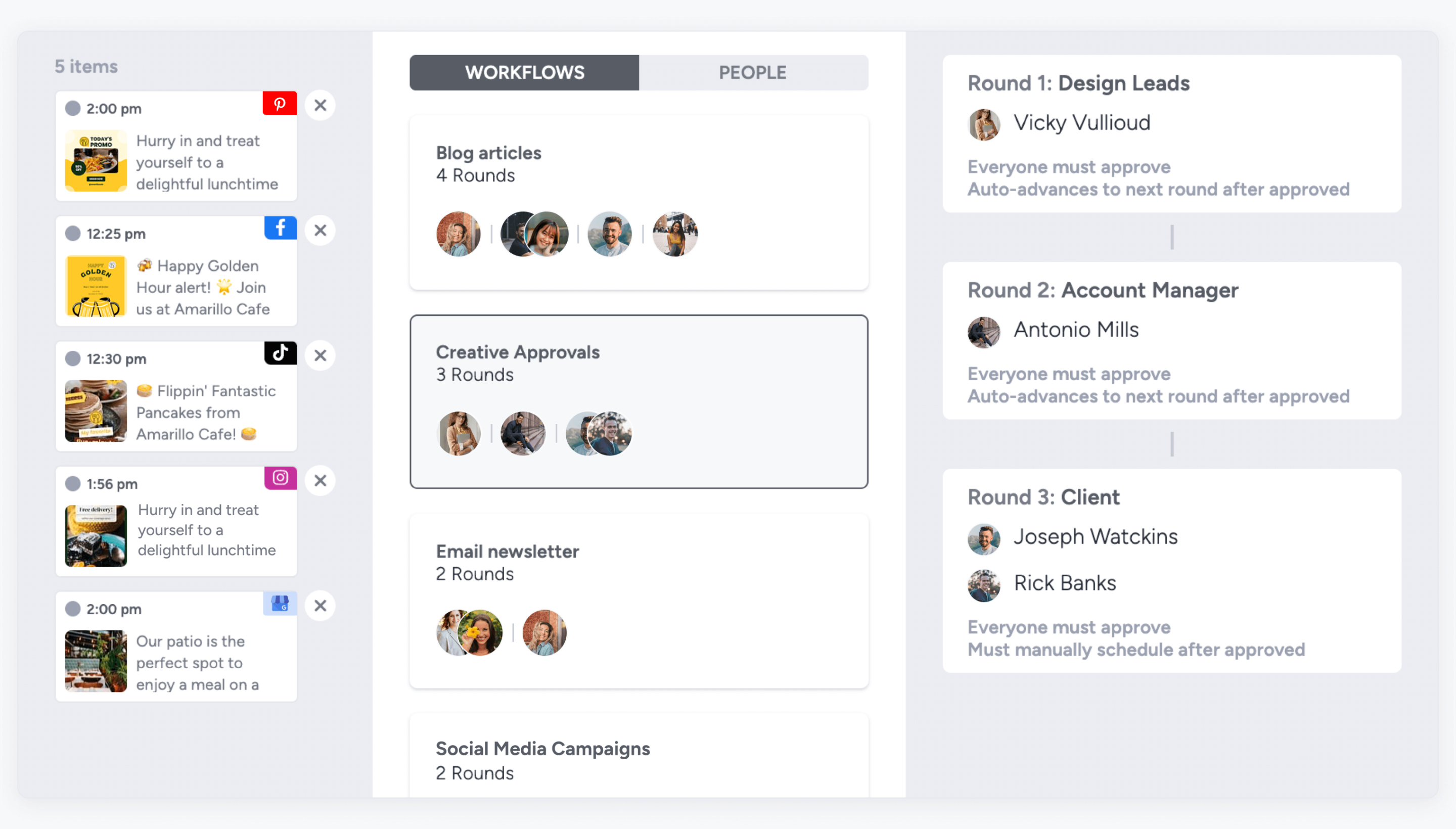Designed by Pressfoto
Social media agencies want to maintain a good relationship with their clients. However, often due to communication issues, the relationship can turn sour.
Here are 7 secrets to make your client communication smoother and more effective.
1. Focus on Better Onboarding
Onboarding is the first step in establishing a relationship with your clients. However, many social media agencies rush through this part, eager to get to the main work. This often makes clients feel lost and unsure about what comes next.
If clients don’t fully understand the process or feel neglected right from the start, it can lead to frustration and misunderstandings. It’s no wonder that 90% of customers claim they aren’t happy with the onboarding experience they receive from companies.
To avoid these issues, take the time to create a detailed onboarding experience. Introduce your team and explain everyone’s roles. Talk about the tools you’ll use and how you’ll keep in touch. Also, give your clients a clear plan in a welcome kit, outlining the immediate goals and what they should expect in the coming weeks.
Not sure where to begin? Check out our guide on client onboarding for detailed steps to help you start off on the right foot.
2. Document All Agreements
You discuss something with the client during the discovery call, but when it comes time to implement it, suddenly, the client remembers the discussion differently.
Without a clear record, each party might have different expectations about deliverables, timelines, or payment terms. This situation can quickly deteriorate relationships, causing frustration and mistrust on both sides.
The solution is simple: document everything. From the scope of the project and specific deliverables to timelines and payment schedules—make sure it’s all in writing. Use a contract or a project agreement as a living document that you can refer back to. This not only helps keep both parties aligned but also acts as a safeguard in case of disagreements.
3. Provide Regular Updates
It’s common for clients to feel out of the loop once projects begin. Without regular updates, they might worry about progress or question your agency’s effectiveness. This uncertainty can breed anxiety and lead to clients bombarding your team with check-ins. Such interruptions can disrupt workflow and slow down project momentum.
Addressing this is straightforward: Establish a schedule for regular updates. Decide whether weekly or bi-weekly best fits the project’s pace. Use these updates to share progress, discuss challenges, and adjust timelines if necessary. These regular check-ins keep clients informed and engaged. They also provide an opportunity to celebrate milestones and manage expectations.
4. Establish Consistent Feedback Channels
Sometimes, clients struggle to voice their concerns or feedback. They may feel there’s no appropriate channel to do so, or they might think their input won’t be welcomed or acted upon. This can lead to dissatisfaction simmering under the surface, which might only emerge when issues have compounded beyond easy fixes.
The remedy lies in establishing clear, consistent feedback channels. Set up regular intervals for feedback through structured meetings, responsive emails, or even dedicated platforms for client communications. Make it clear that you welcome their thoughts at any time. Encourage open dialogue by asking specific questions about their satisfaction and any concerns they might have.
5. Define a Clear Content Revision Process
From our experience talking with agency owners, we’ve learned that the content revision stage often causes communication breakdowns with the clients. This happens because:
- There’s no clear process for approving content.
- Heavy reliance on email to transfer content assets between stakeholders creates confusion.
- Clients often do not provide timely feedback and need to be chased.
When there’s no set process for approving content and everyone just uses email to share files, it can get really confusing. This mess leads to a lot of back-and-forth and waiting around for feedback, making communication between agencies and their clients pretty frustrating and inefficient during content revisions.
To smooth out these bumps, it’s best to set up a clear, organized way for approving content. Try using one central platform where you can keep track of all clients’ feedback and comments and make sure you’re always working on the latest version. Our tool, Gain, is designed to help you do just that.
With Gain, you can build your social media content approval workflows exactly how you need, adding as many approval rounds and people as you want. Once you send your content out for approval, Gain handles everything for you—it automatically sends reminders to your clients until they approve. This means the whole approval process, which once caused you communication headaches, can now run smoothly on autopilot, without you needing to nag clients.

What’s also great about Gain is that it supports in-context collaboration and feedback. This means your clients can give feedback directly next to the social posts they’re approving. And when approving files like PDFs or photos, they can make annotations directly on the file. So, you end up with a crystal-clear paper trail where each social post has a record of all clients’ comments regarding it.

6. Don’t Overlook Client Input
It’s easy to get caught up in the day-to-day rush and start making decisions without pausing to consult your client, especially when deadlines are breathing down your neck. However, overlooking client input can lead to a final product that misses the mark, which can upset clients and lead to unnecessary rounds of revisions.
To prevent this, ensure that listening to your client is a core part of your workflow. Set up regular meetings or calls specifically to gather their thoughts and preferences. Treat these sessions as essential, not just check-in points. Use what you learn to steer your campaigns and content creation, making sure that each piece not only meets the brief but also resonates with the client’s vision.
7. Agree On Which Metrics Are Important + Provide Tailored Reports
It’s not uncommon for clients and agencies to have different opinions on what success looks like. Without a shared understanding of key performance indicators (KPIs), clients may feel that their goals are not being met, even if the agency believes it’s doing well. This mismatch can lead to dissatisfaction and a communication breakdown.
At the beginning of your partnership, sit down with your client to discuss and agree on the metrics that matter most to them. Whether it’s engagement rates, follower growth, click-through rates, or ROI, getting clarity on these metrics will guide your strategy and reporting. Once these metrics are set, create customized reports focusing on these agreed-upon KPIs to regularly show how the campaigns perform against them.
Our tool, Gain, can help you track key social media performance metrics for posts published on Facebook, TikTok, Pinterest Business, Instagram Business, and LinkedIn Pages. Click here to discover the specific metrics you can track for each social network.

To Sum Things Up…
Good communication keeps your clients happy and your projects on track. Focus on clear onboarding, maintain detailed records, provide regular updates, and establish straightforward revision processes. These steps will set the stage for a successful partnership.
Try using Gain to make these steps even smoother. It’s a fantastic tool for managing client communications and organizing feedback efficiently.
Start a free trial now.






